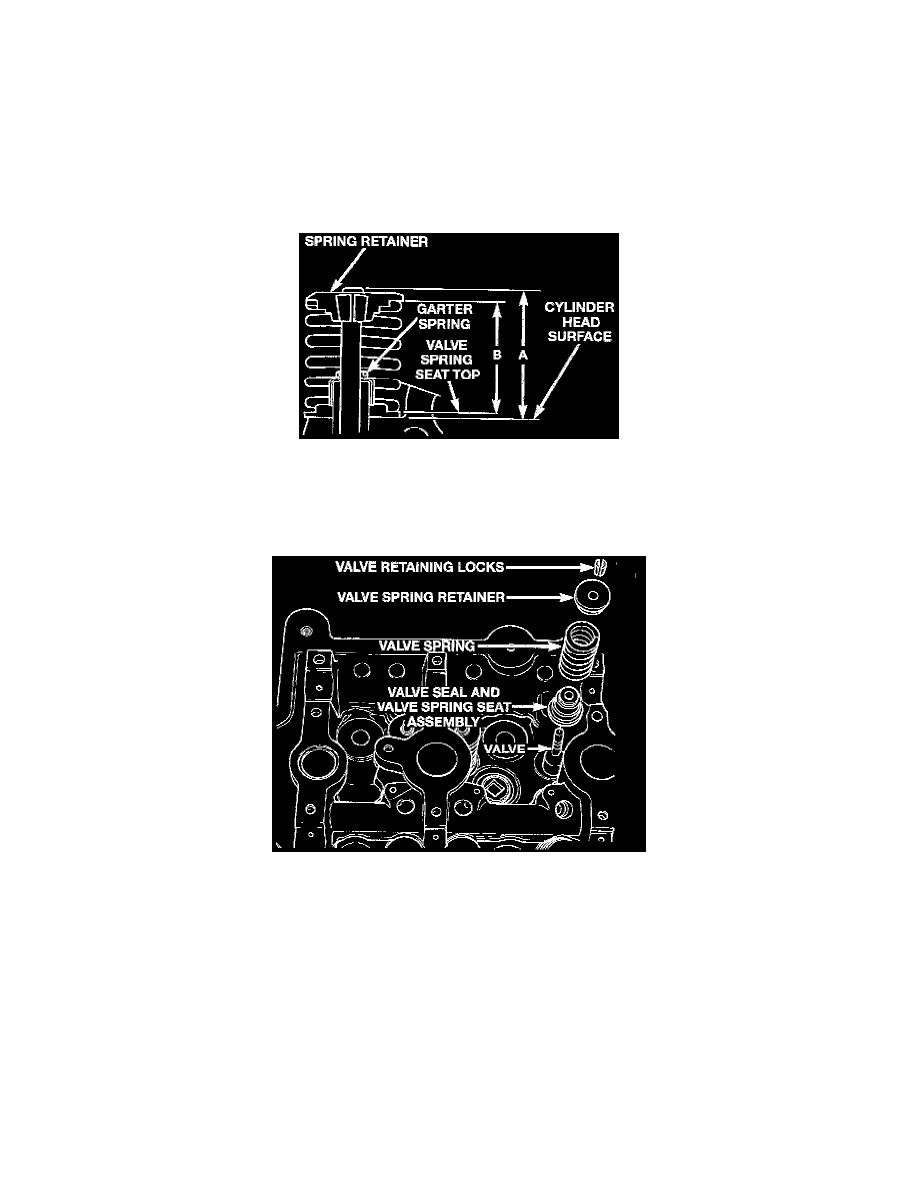Concorde V6-2.7L VIN R (1998)

Valve: Service and Repair
Removal and Installation
REMOVAL
1. With cylinder head removed, compress valve springs using a Special Tool C-3422-B, Valve Spring Compressor.
2. Remove valve retaining locks, valve spring retainers, valve springs and valve spring seat/stem seal assembly.
3. Before removing valves, remove any burrs from valve stem lock grooves to prevent damage to the valve guides. Identify valves to insure
installation in original location.
INSTALLATION
1. Coat valve stems with clean engine oil and insert them in cylinder head.
Figure 49-Valve Tip Height And Valve Spring Installed Height Checking
2. If valves or seats have been reground, check valve tip height (A). If valve tip height for intake valve is greater than 47.59 mm (1.8737 inch) or
49.14 mm (1.9347 inch) for exhaust valve, grind valve tip until within specifications. Make sure measurement is taken from cylinder head surface
to the top of valve stem.
Figure 50-Valve, Spring, And Valve Stem Seal
3. Install valve seal/spring seat assembly over valve guides on all valve stems. Ensure that the garter spring is intact around the top of the rubber seal.
Install valve springs valve retainers.
4. Compress valve springs with a valve spring compressor install locks and release tool. If valves and/or seats are reground, measure the installed
height of springs (B), make sure measurements are taken from top of spring seat to the bottom surface of spring retainer. If height is greater than
38.75 mm (1.5256 inches), install a 0.762 mm (0.030 inch) spacer in head counterbore under the valve spring seat to bring spring height back
within specification.
